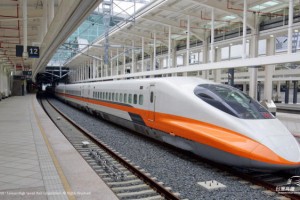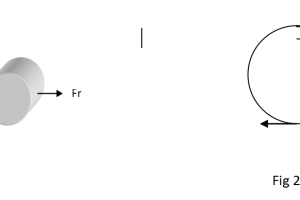Traction Mechanics
Specific Energy Consumption of High Speed Rail as compared to Semi-HSR

Last updated on April 5th, 2015 at 06:16 am There is a general belief that the train resistance (resulting high specific energy consumption) of high-speed train is high as compared to normal speed train. The UIC sponsored study proved it otherwise with following arguments explained in the discussion Curve Resistance: High speed Rail routes had […]
Traction Mechanics – Numerical Problems
Last updated on June 22nd, 2013 at 01:15 am Q 1: A train weighing 5000T starts by a locomotive weighing 125T. The starting resistance of locomotive and train are 6 & 4kg/T respectively. What is the total train resistance at the start? 5000*4+125*6=20750Kg Ans: =20.75T Q 2 : A train weighting 1500T […]
Braking Effort

Last updated on April 5th, 2015 at 06:14 am Braking effort is the effort required to stop the train within safe braking distance. It has safety consequences. Braking effort is required to counter the kinetic energy of train running at a speed V and can be expressed as . where D is braking […]
Wheel Slipping and Sliding
Last updated on March 23rd, 2014 at 05:02 pm Wheel slipping occurs when tractive effort exceeds adhesive weight whereas sliding occurs when braking effort exceeds adhesive weight. In both the situations, it is the adhesive weight playing the most important role. Adhesive weight is defined as the force that can be exerted by a […]
Tractive Effort

Last updated on July 29th, 2019 at 04:51 am Tractive effort is the force required to haul a load. Tractive effort, when multiplied with speed at which the train is required to run, gives the HorsePower. Importance of Tractive effort lies with its capability to start a train on the gradient and run it up […]
Train, grade, curve and Acceleration Resistance
Last updated on February 6th, 2017 at 10:19 am Trains resistance is defined in terms of force required to encounter resistance arising due to vehicle, track, grade, curve, acceleration, wind at different time and place etc. Study of these resistances and its impact in train motion is important to develop strategies for reducing it. It […]
Adhesion

Last updated on April 5th, 2015 at 06:13 am Adhesion is one of the most important term used in Railways parlance signifying the ability of efficient heavy haul and safe braking. Adhesion limits the tractive and braking effort per traction and braking wheel respectively. On Indian Railways, adhesion limitation has caused more concern of wheel […]
Traction Mechanics

Last updated on November 21st, 2014 at 08:15 am Traction Mechanics is the study of train motion. The mechanics involves conversion of overhead electrical power/diesel/steam power in rail horse power to haul a train encountering acceleration, train, grade, curve resistance and similarly braking. Traction Mechanics involves concept of train resistance tractive effort braking effort adhesion […]